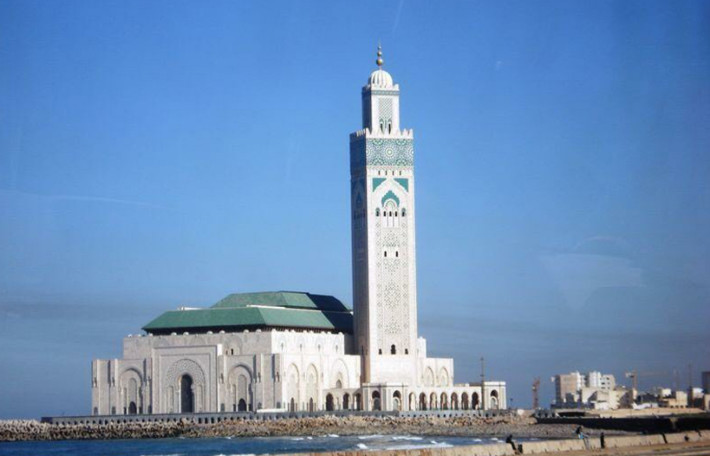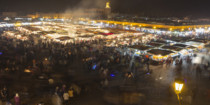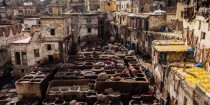Casablanca is a city in western Morocco, located on the Atlantic Ocean. It is Morocco’s largest city as well as its chief port. It is also the biggest city in the kingdom. First settled in the 7th century and reconstructed in 1756. The 2010 census recorded a population of 3,949,805 in the prefecture of Casablanca and 3,631,061 in the countrysides.
Casablanca is considered the economic and business center of Morocco, while the political capital city of Morocco is Rabat. Casablanca hosts headquarters and main industrial facilities for the leading Moroccan and international companies based in Morocco. Industrial statistics show Casablanca retains its historical position as the main industrial zone of the country. The Port of Casablanca is one of the largest artificial ports in the world and the largest port of North Africa.
The original name of the city is a Spanish word combination meaning ‘White House’ (Blanca, ‘white. casa, ‘house’). It is thought that the Spaniards adopted the name from Portuguese Casa Branca. The city is now nicknamed Casa by many locals.
The Berber original name Anfa means hill in English, was used by the local, and Berber-speaking, city settlers, until the French occupation army entered the city in 1907 and adopted the Spanish name, Casablanca. Anfa now refers to the original old city quarters of Casablanca. It is considered by the Moroccans as a district or a part of the Grand Casablanca. Anfa, ancient Casablanca, was considered as a great city which was founded by the Romans, and it was the most prosperous city on the Atlantic coast because of its fertile land.
There are two airports in Casablanca called Casablanca-Anfa Airport, the other Mohammed V International Airport.
History of Casablanca:
A small independent kingdom, in the area then named Anfa, arose around late Roman time in response to Arab Muslim rule, and continued until it was conquered by the Almoravids in 1068.
Casablanca rose in importance as a port. In the early 15th century, the town became an independent state once again, and emerged as a safe harbor for pirates and privateers, leading to it being targeted by the Portuguese, who destroyed the town in 1468. The Portuguese used the ruins of Anfa to build a military fortress in 1515. The town that grew up around it was called “Casa Branca”, meaning “white house” in Portuguese. Between 1580-1640, Casablanca was part of Spain, and later it became part of Portugal again. The Europeans eventually abandoned the area completely in 1755 following an earthquake which destroyed most of the town in 1755.
In the 19th century, the area’s population began to grow as it became a major supplier of wool to the booming textile industry in Britain and shipping traffic increased (the British, in return, began importing Morocco’s now famous national drink, gunpowder tea). By the 1860s, there were around 5,000 residents, and the population grew to around 10,000 by the late 1880s. Casablanca remained a modestly sized port, with a population reaching around 12,000 within a few years of the French conquest and arrival of French colonialists in the town, at first administrators in 1906.
The famous 1942 film Casablanca underlined the city’s colonial status at the time, depicting it as the scene of a power struggle between the competing European powers, carried out with little reference to the local population. The film’s vast cosmopolitan cast of characters: American, French, German, Czech, Norwegian, Bulgarian, Russian and some other nationalities.
Casablanca was an important strategic port during World War II and hosted the Casablanca Conference in 1943, in which Churchill and Roosevelt discussed the progress of the war. Casablanca was the site of a large American air base, which was the staging area for all American aircraft for the European Theater of Operations during World War II.
Casablanca Highlights:
Mosque Hassan II is the largest mosque in the kingdom and the fifth largest mosque in the world. It stands on a promontory looking out on the Atlantic and has space for 25,000 worshippers. A further 80,000 can be accommodated in the mosque’s adjoining grounds for a total of 105,000 worshippers present at any given time at the Hassan II mosque. Its minaret is the tallest one in the world at 210 m.



